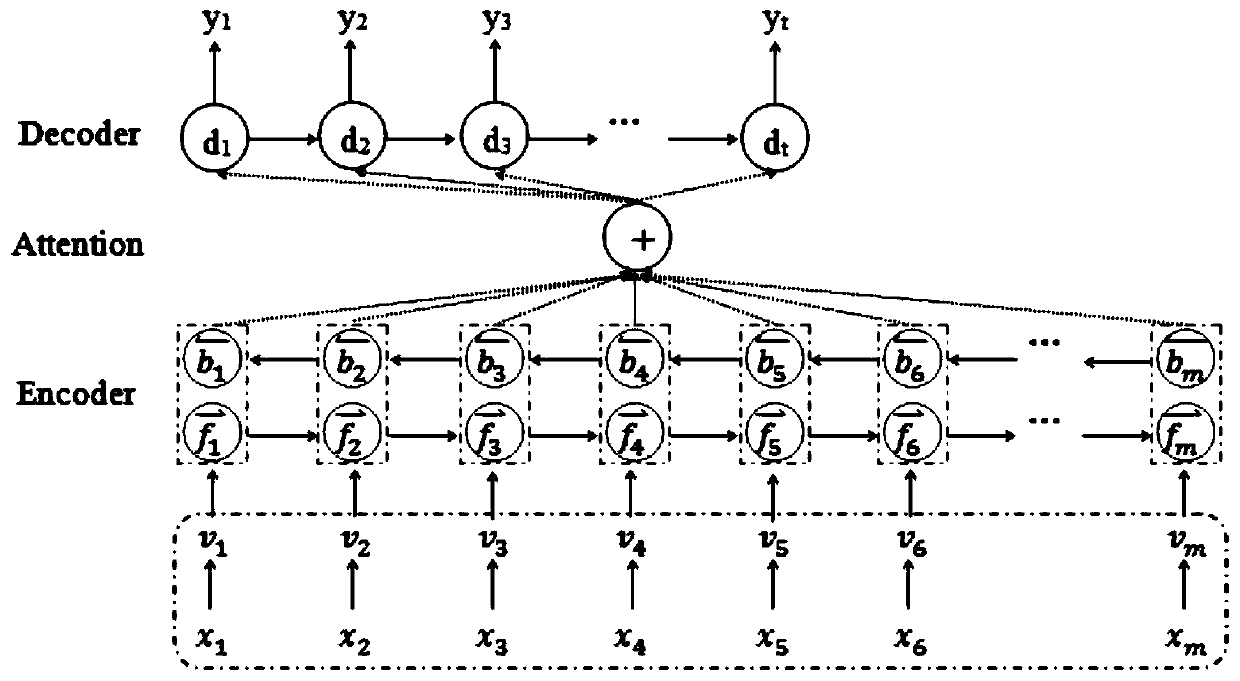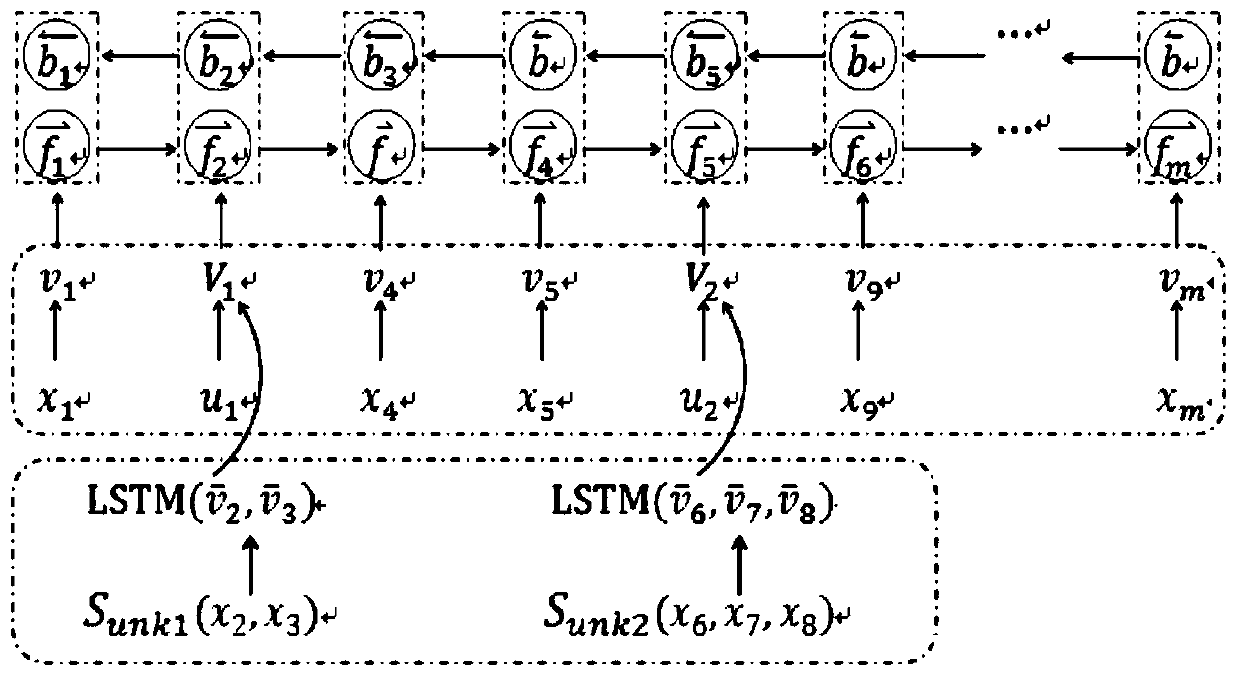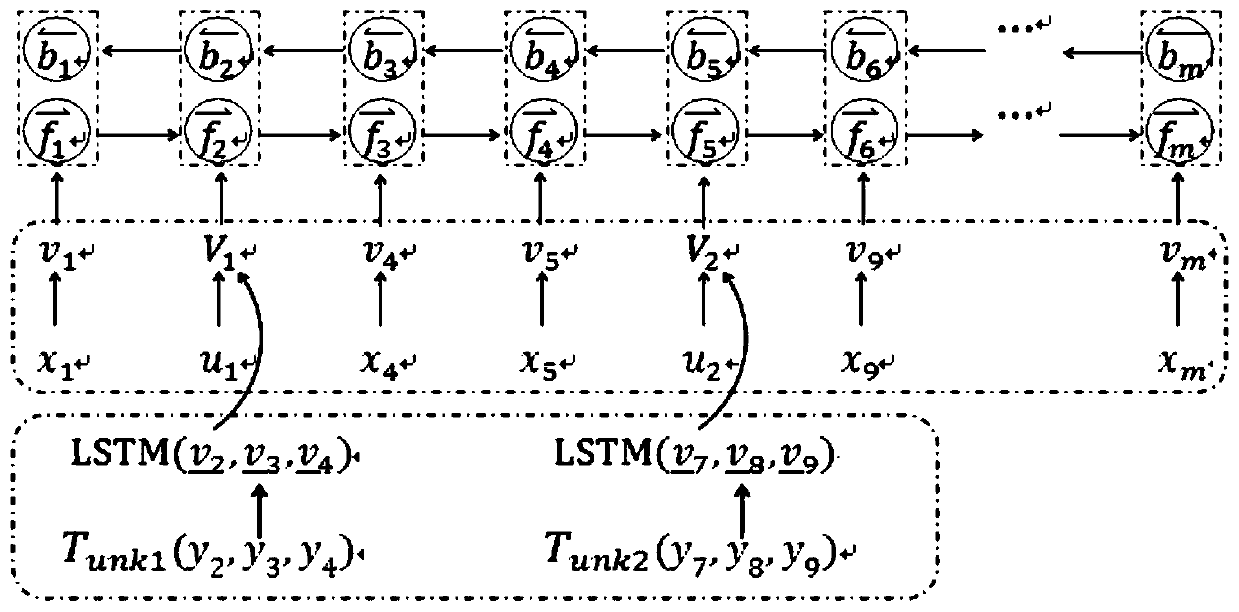Low-frequency word translation method based on semantic information fusion
A technology of semantic information and low-frequency words, applied in the field of machine translation
- Summary
- Abstract
- Description
- Claims
- Application Information
AI Technical Summary
Problems solved by technology
Method used
Image
Examples
Embodiment Construction
[0059] In order to enable those skilled in the art to better understand the technical solution of the present invention, the process of the neural machine translation system is described by taking a translation system based on a recurrent neural network (RNN) and an attention mechanism (Attention) as an example, and then using this framework as This example illustrates how to effectively integrate the vector representations of low-frequency words in the source language, low-frequency words in the target language, and the vector representation of the wildcard UNKi. It should be noted that the present invention can also be extended to other neural network translation systems, such as translation systems based on convolutional neural networks (CNN), and translation systems based entirely on attention mechanisms.
[0060] Description of translation system based on RNN and Attention:
[0061] Such as figure 1 As shown, the schematic diagram of the neural network translation model ...
PUM
 Login to View More
Login to View More Abstract
Description
Claims
Application Information
 Login to View More
Login to View More - R&D
- Intellectual Property
- Life Sciences
- Materials
- Tech Scout
- Unparalleled Data Quality
- Higher Quality Content
- 60% Fewer Hallucinations
Browse by: Latest US Patents, China's latest patents, Technical Efficacy Thesaurus, Application Domain, Technology Topic, Popular Technical Reports.
© 2025 PatSnap. All rights reserved.Legal|Privacy policy|Modern Slavery Act Transparency Statement|Sitemap|About US| Contact US: help@patsnap.com



